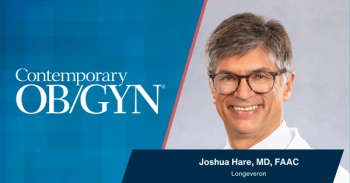
How much do women understand about breast density? And other current research
A research round-up on how much women understand about breast density and the role of lycopene in kidney cancer risk. Plus, NICHD pledges money for research into the placenta.
According to a
Researchers at the Mayo Clinic administered the survey in English and Spanish to 2311 women, using a probability-based sample of individuals who were of age for
Of the 1502 women (65%) who responded, 58% had heard of BD, 53% knew that BD affects the risk of cancer, and 49% knew that BD can impact the detection of breast cancer. After adjusting for multiple variables, increased BD awareness was associated with white non-Hispanic race/ethnicity (Hispanic v white non-Hispanic: odds ratio [OR], 0.23; P < .001), education (OR, 1.19 per category increase; P < .001), diagnostic evaluation after a mammogram (OR, 2.64; P < .001), postmenopausal
Women who knew about the masking effect of BD were more likely to have a prior breast biopsy (OR, 2.16; P < .001), to be educated (OR, 1.22; P = .01), to have a higher household income (OR, 1.10; P < .001), and to reside in Connecticut (Connecticut v other states: OR, 3.82; P = .003). Residents of Connecticut were also more likely to have previously discussed their BD with their healthcare provider than were residents of other states (67% v 43% for residents of other US states; P = .001).
The researchers concluded that awareness and knowledge of BD vary according to a woman’s income, education, and race/ethnicity. Mandatory disclosure laws, they believe, will help increase knowledge about BD and its impact on breast cancer detection.
NICHD dedicates $41.5 million to placenta research
Understanding and monitoring development of the human
The funding-which corresponds to eight to nine awards for fiscal year 2015-is intended to drive development and application of tools for safe assessment of structure and function of the human placenta at a micro and macro level throughout gestation in real time. Use of such tools and technologies should ultimately lead to new ways to treat, cure, and even prevent placental dysfunction disorders such as
The HPP has five overarching goals:
· Improvement in current methods and development of new technologies for real-time assessment of human placental structure and function across gestation;
· Application of these technologies to understand and monitor, in real time, placental development and function in normal and abnormal human pregnancies;
· Development and evaluation of noninvasive markers of placental dysfunction for prediction of adverse human pregnancy outcomes;
· Understanding of how placental development contributes to long-term human health and disease; and
· Development of interventions to prevent abnormal placental development and hence improve pregnancy outcome.
Researchers requesting
To date, most studies of the placenta have provided foundational information about the organ through use of ultrasound, blood tests, and examination of placental tissue after delivery. The HPP is designed to address the paucity of information on earlier gestation, the time when many pregnancy pathologies originate, and the limited data gleaned throughout gestation from normal pregnancies.
In an
Can lycopene cut risk of kidney cancer in some women?
Postmenopausal women who consume a diet high in lycopene may be at lower risk of developing renal cell carcinoma (
Included in the analysis were 96,196 postmenopausal women enrolled in the
During the course of follow-up, 240 women were identified as having RCC. Lycopene was inversely associated with RCC risk (P = .015). Compared with the lowest quartile of lycopene intake, the highest quartile was associated with a 39% lower risk of RCC (hazard ratio, 0.61; 95% confidence interval, 0.39-0.97). None of the other micronutrients studied were found to be significantly associated with RCC risk.
Investigators concluded that a higher intake of lycopene could reduce the risk of RCC. They urged further study to determine if the lycopene intake and the RCC risk reduction were correlated.
Newsletter
Get the latest clinical updates, case studies, and expert commentary in obstetric and gynecologic care. Sign up now to stay informed.










